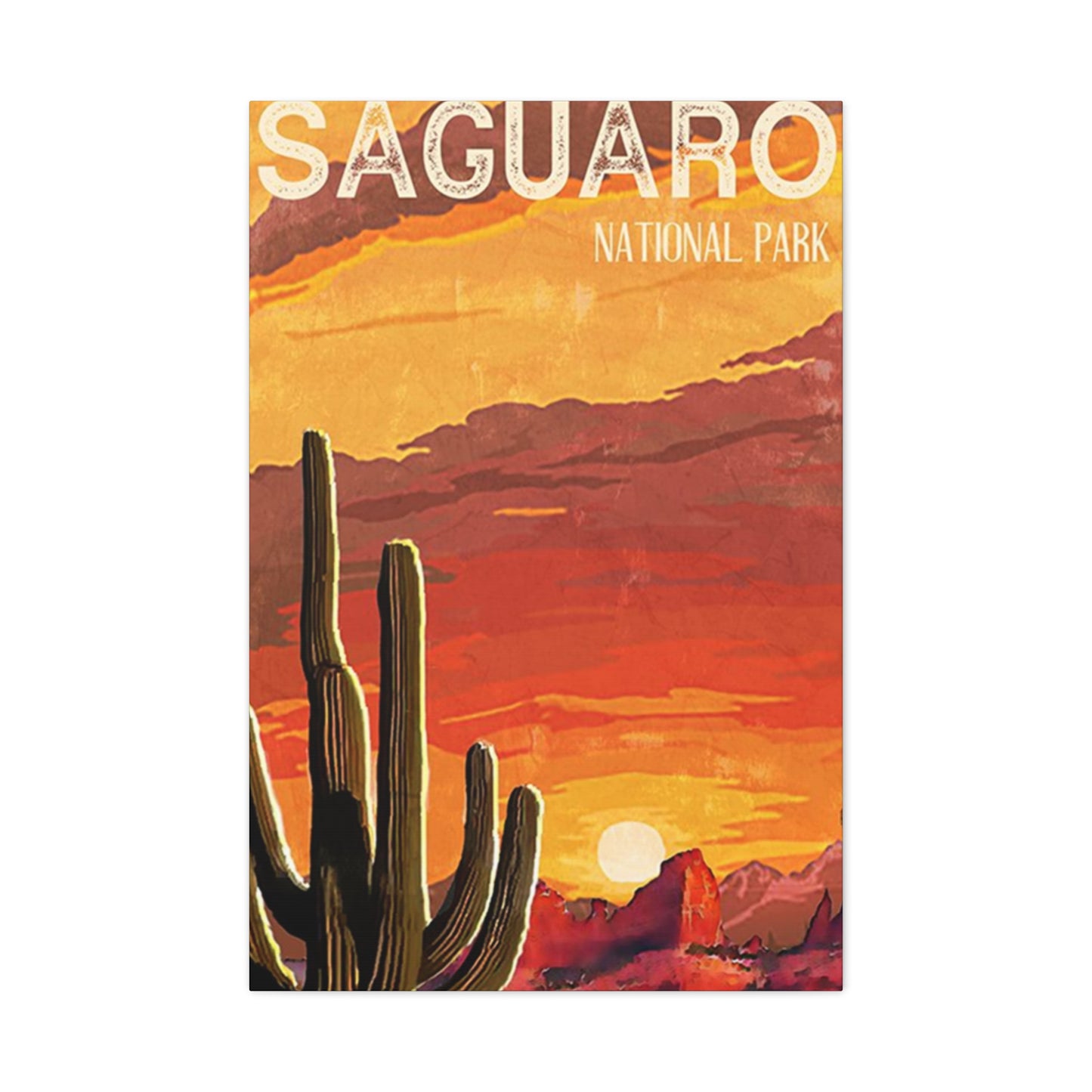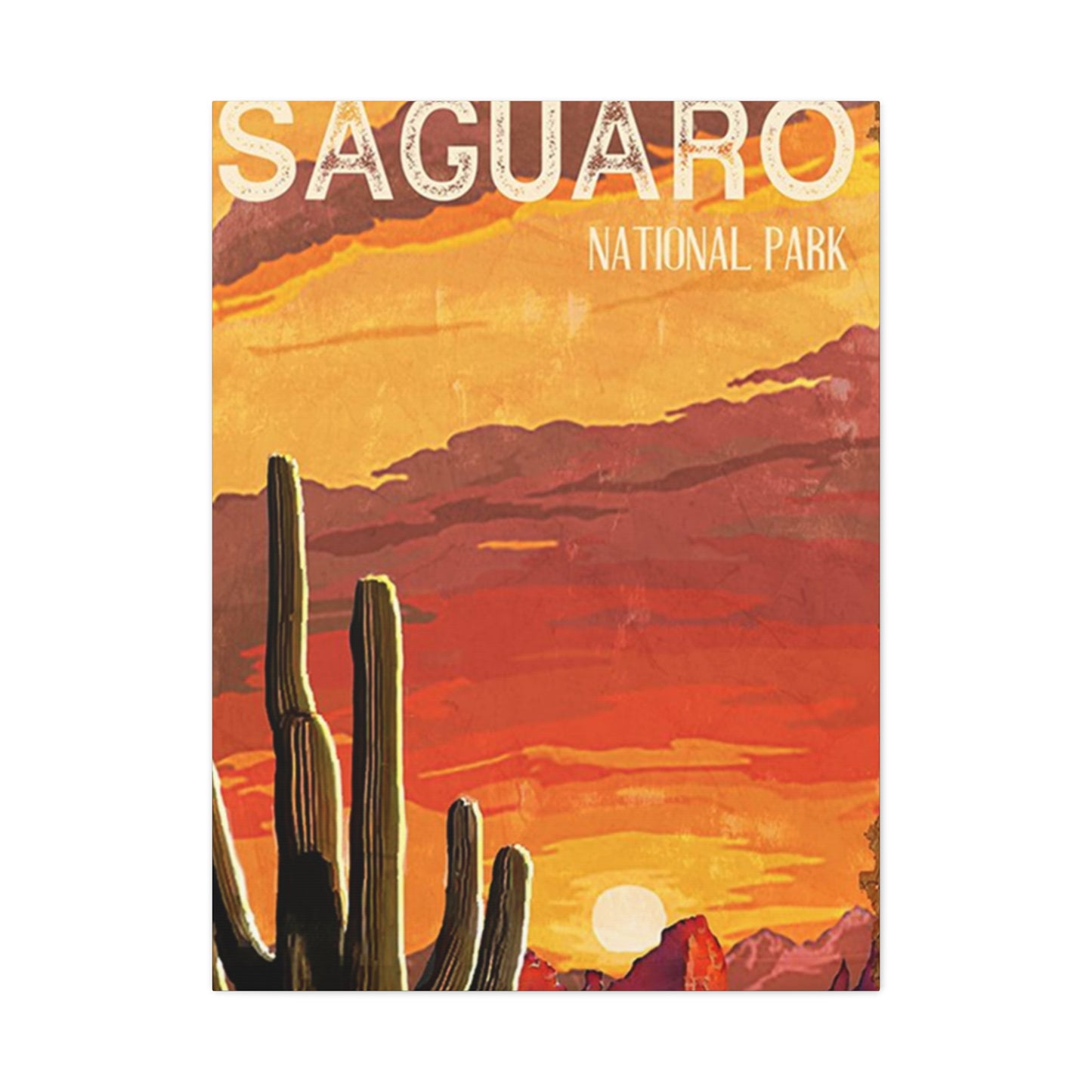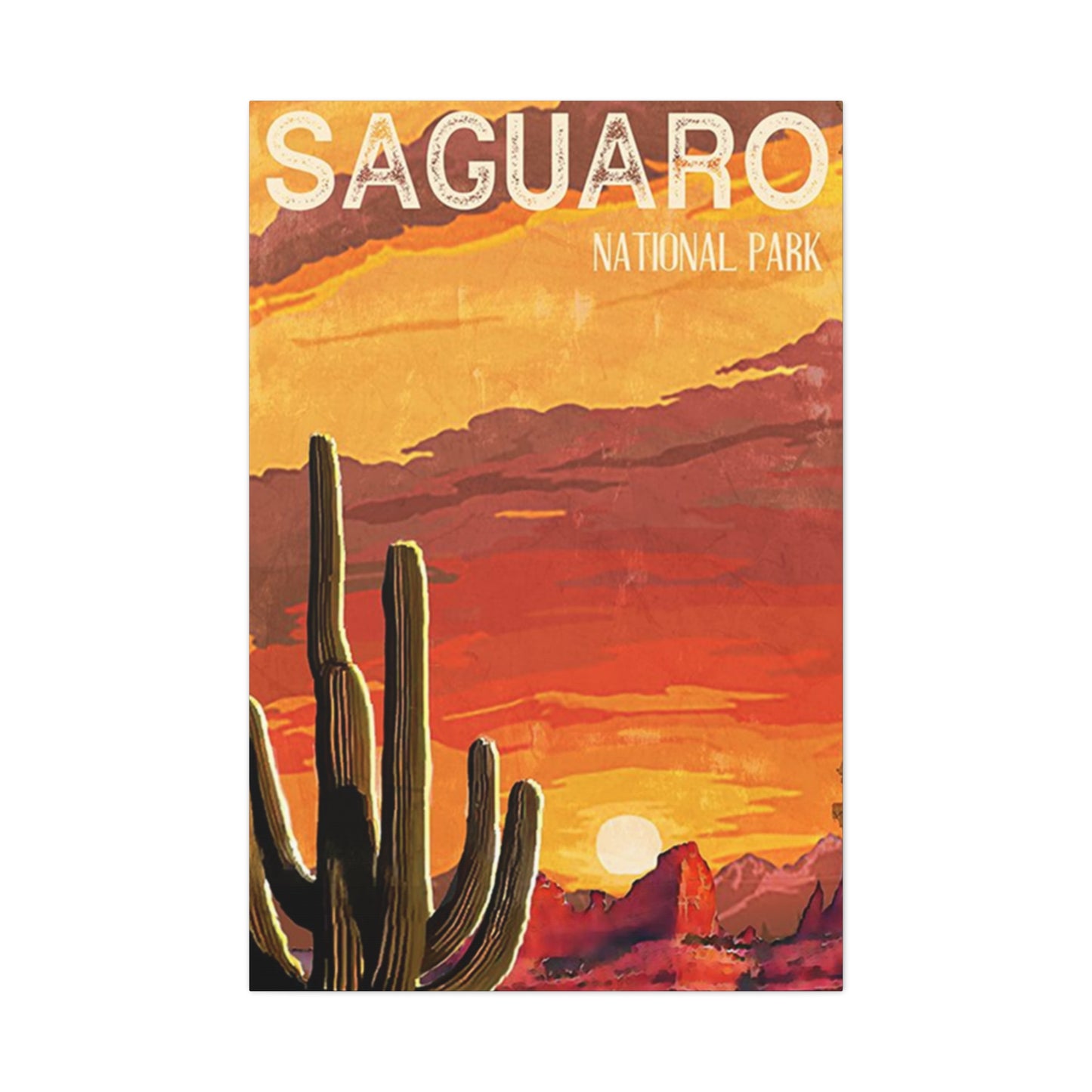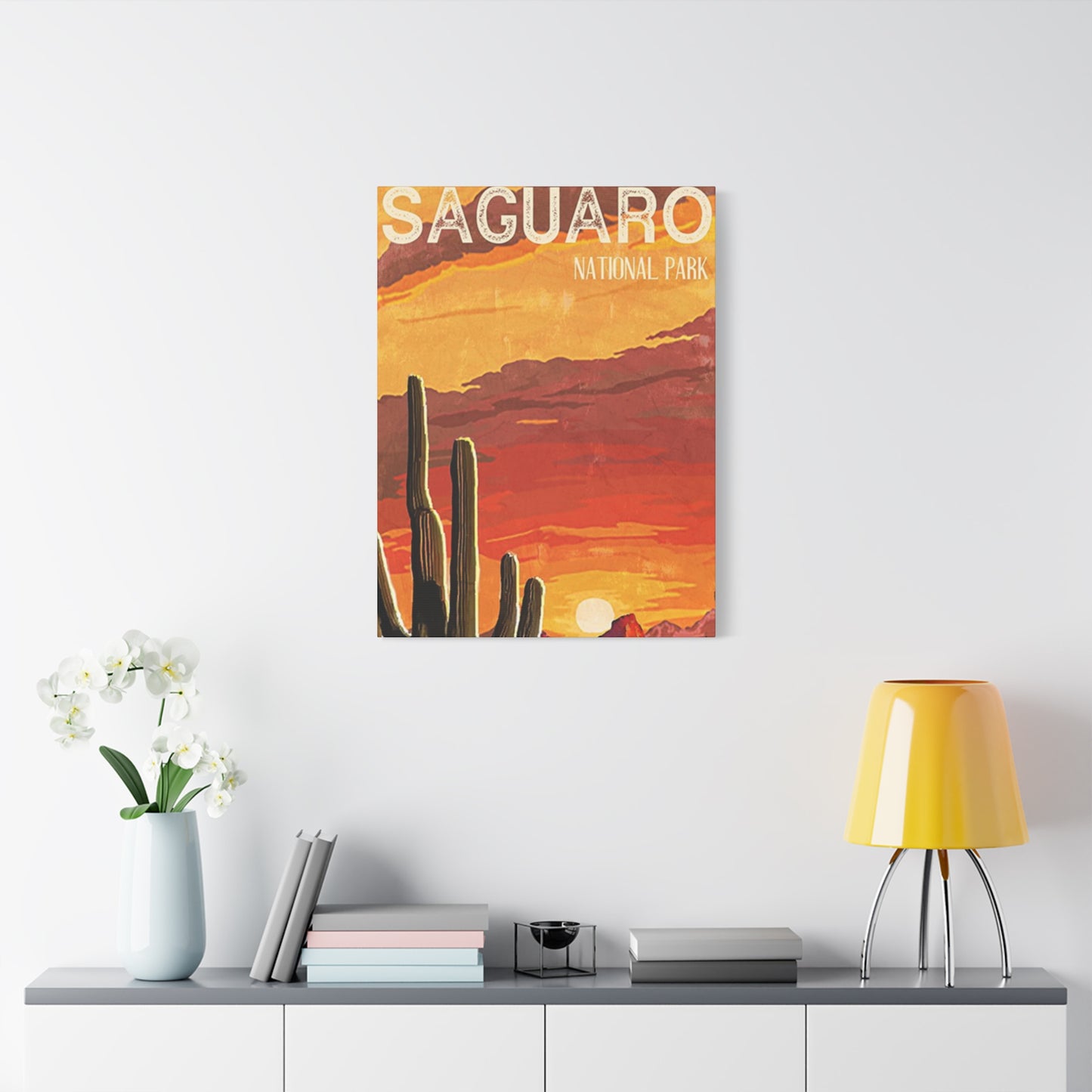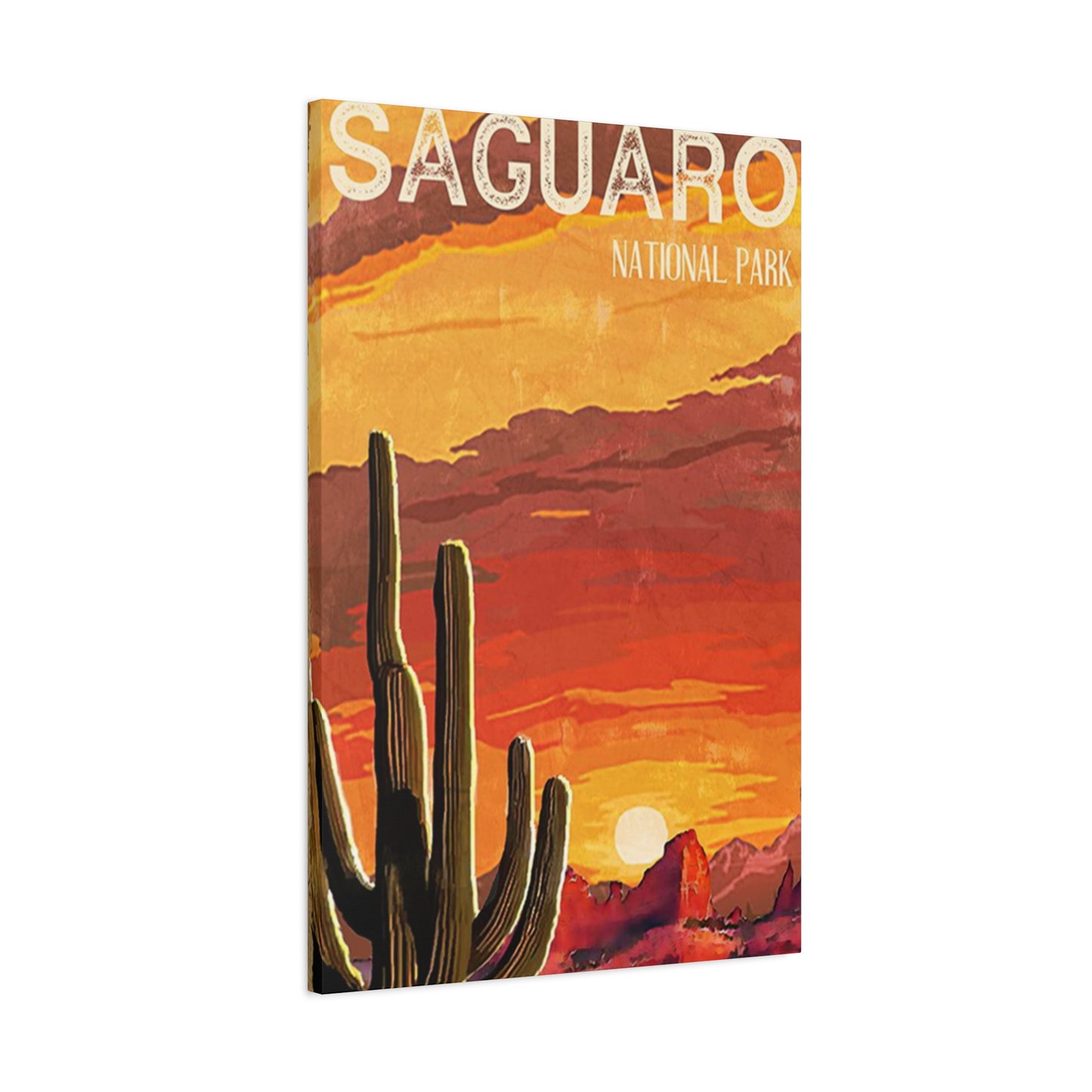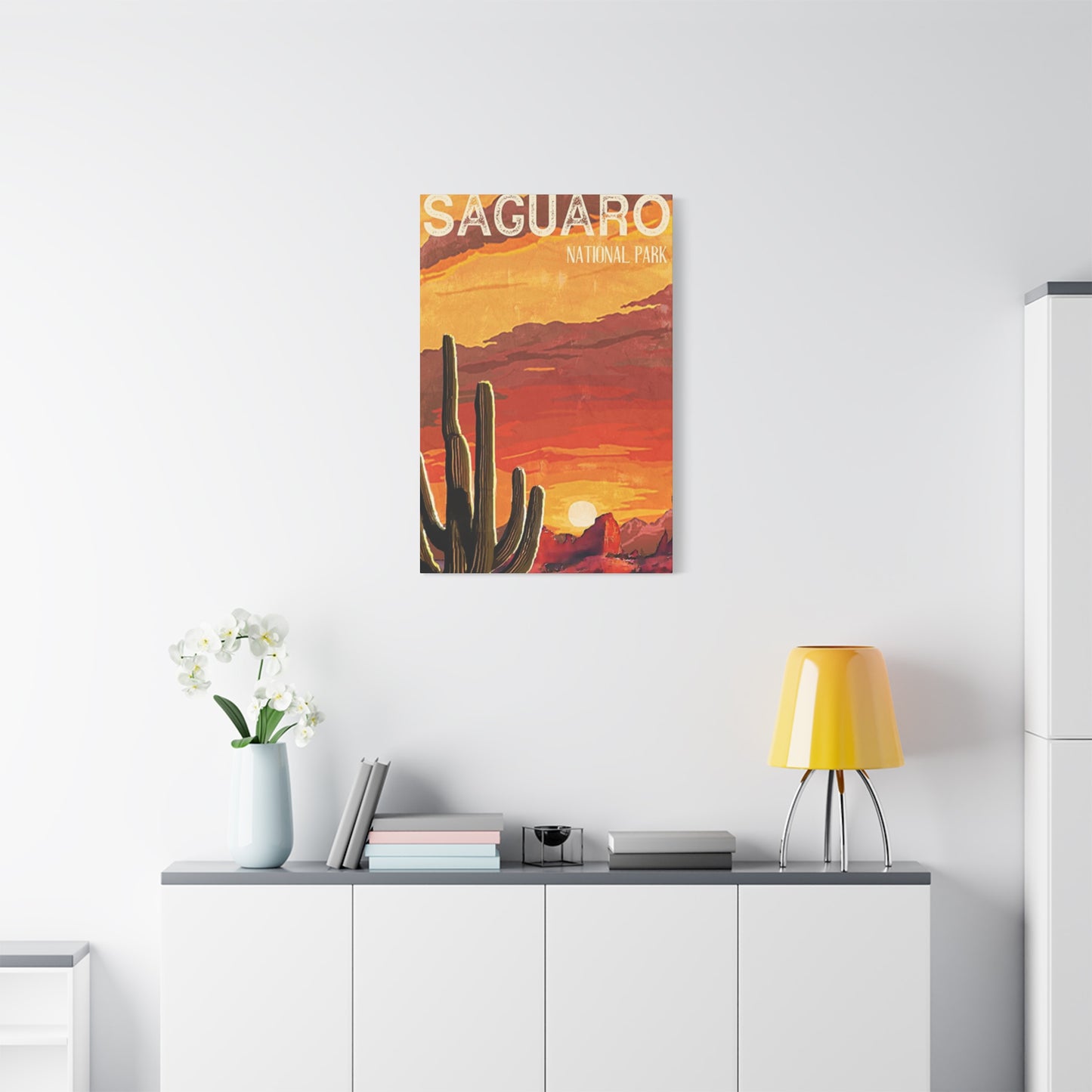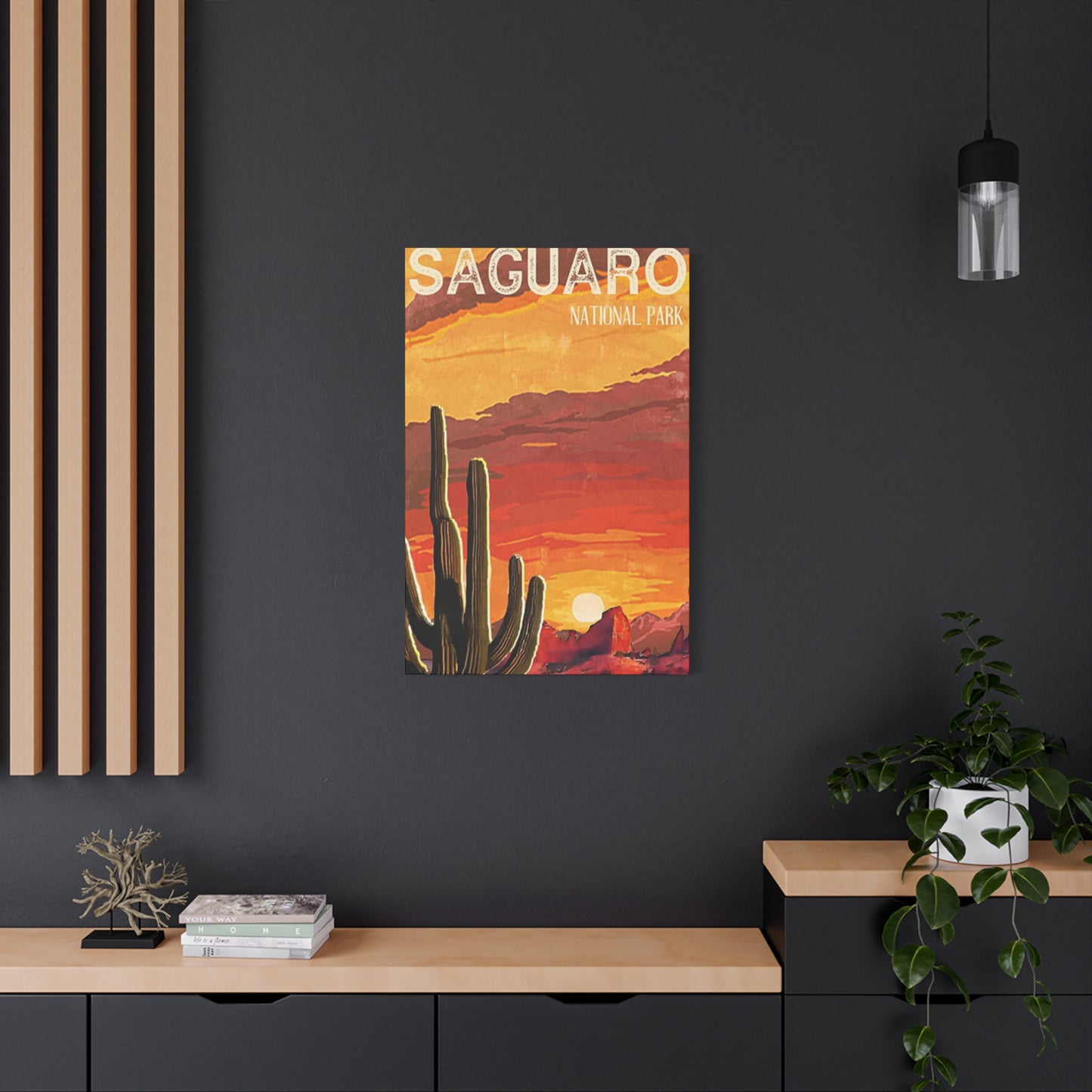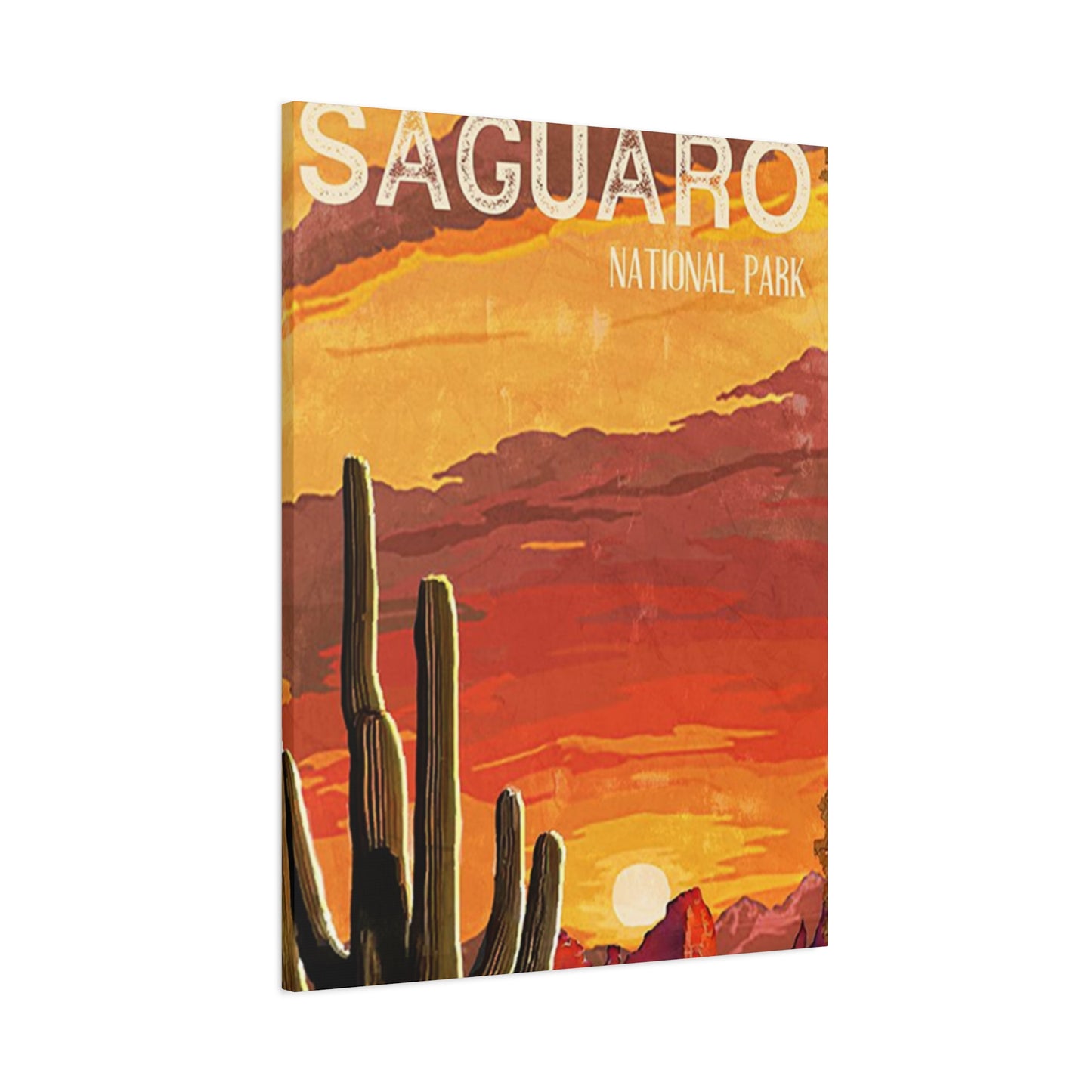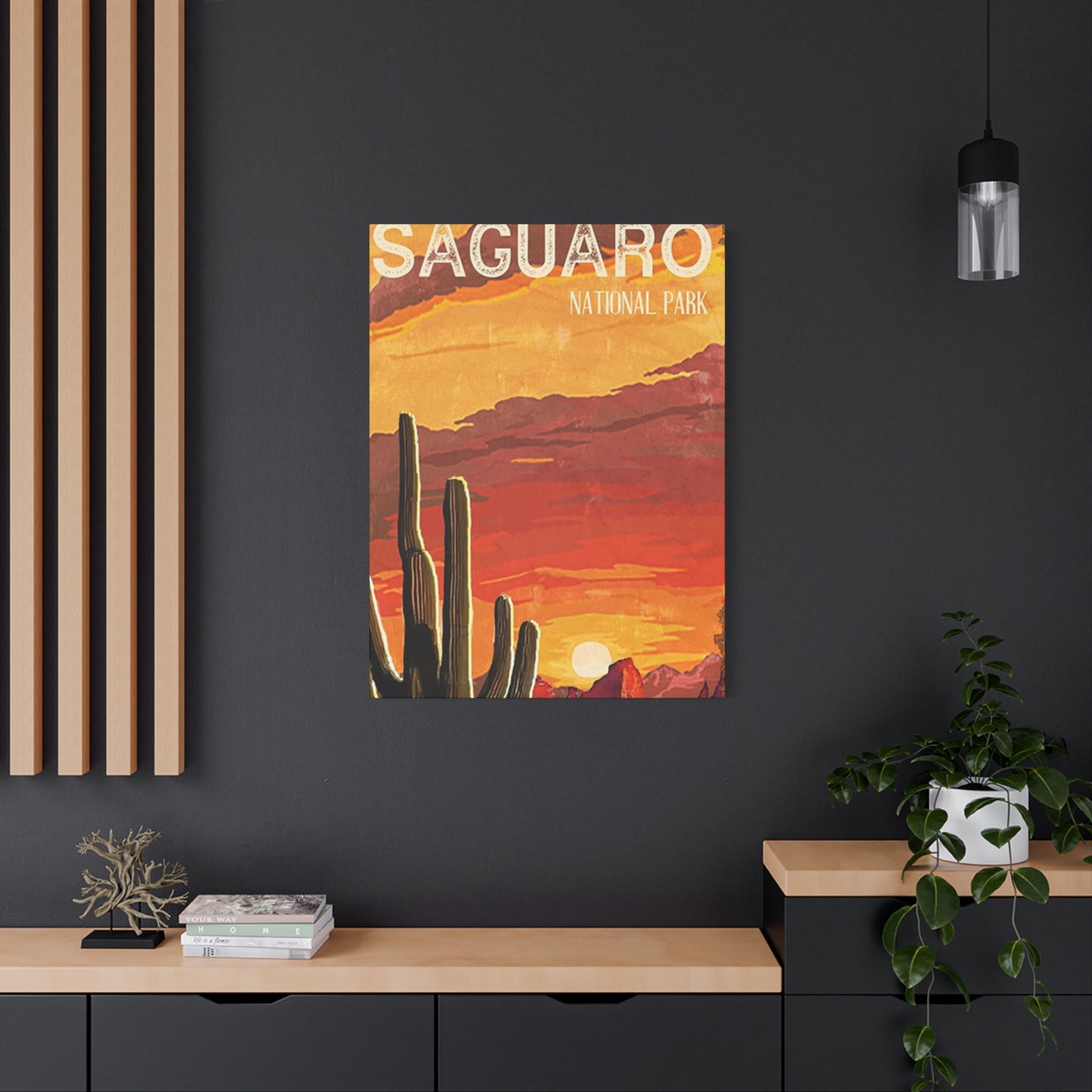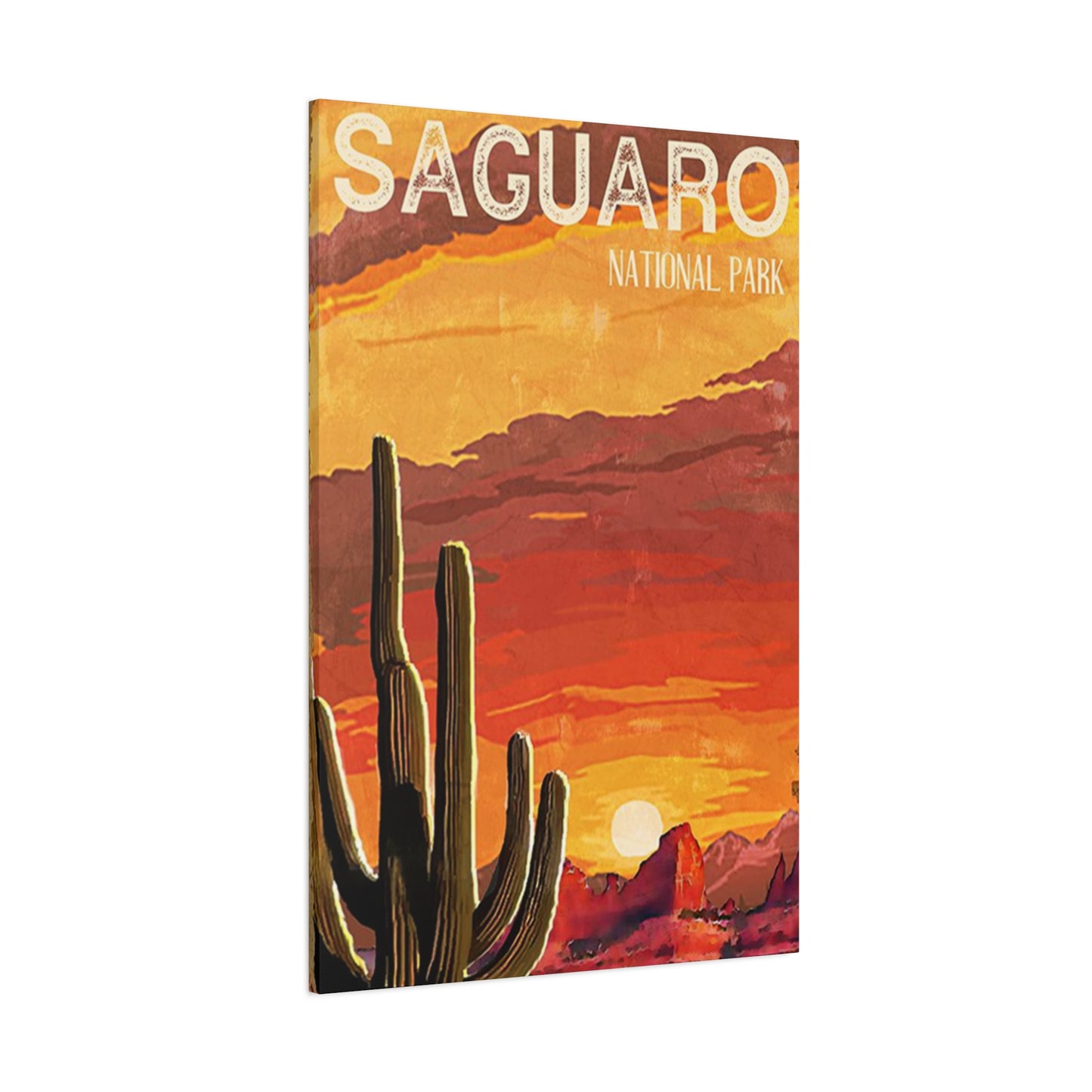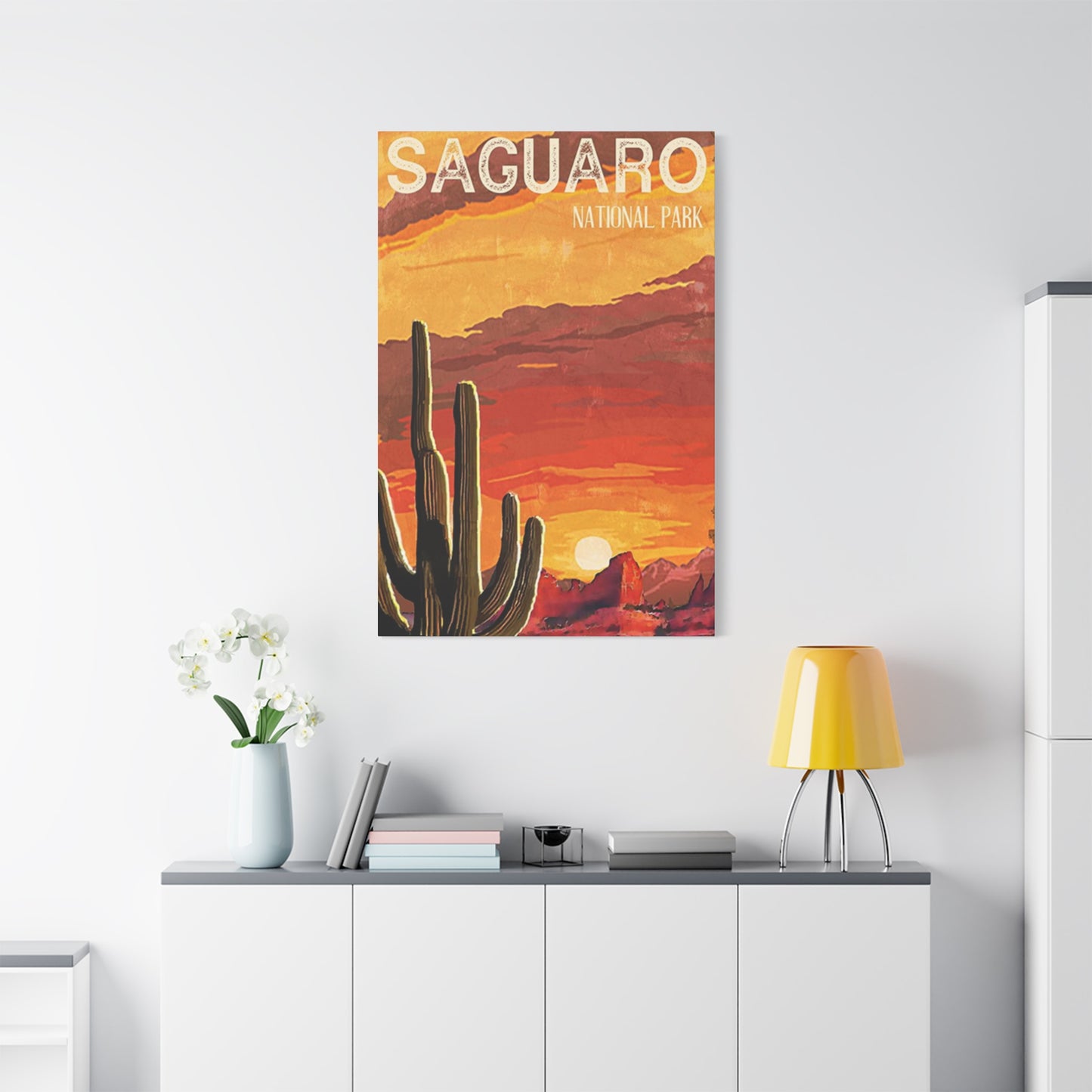How Arizona National Park Wall Art Brings the Beauty of the Southwest into Your Home
The iconic landscapes of Arizona's desert terrain have captivated artists, photographers, and nature enthusiasts for generations. The towering saguaro cacti standing sentinel across the Sonoran Desert represent more than just botanical specimens; they embody the spirit of the American Southwest. Through artistic interpretation, these magnificent desert giants find new life as stunning visual representations that bring the essence of Arizona's wilderness into contemporary living spaces.
The relationship between art and nature reaches its pinnacle when creators capture the raw magnificence of desert environments. Each canvas print, photograph, or artistic rendering serves as a portal to the vast expanses of Arizona's untamed beauty. From the first golden rays of dawn illuminating spiny silhouettes to the deep crimson sunsets painting the sky behind ancient cacti, these artistic creations preserve moments of sublime natural wonder. The growing appreciation for desert-themed artwork reflects a broader cultural recognition of arid landscapes' unique aesthetic value and ecological importance.
Desert Wonders of Arizona Art
Arizona's desert regions present an endless source of artistic inspiration that continues to enchant both creators and admirers. The stark beauty of this arid environment offers dramatic contrasts that translate exceptionally well into visual media. Jagged mountain ranges rise against impossibly blue skies, while weathered rock formations tell geological stories spanning millions of years. The sparse vegetation punctuating the landscape creates negative space that allows each element to command attention and respect.
Artists working with Arizona desert themes discover infinite variations within what might initially appear as monotonous terrain. The subtle gradations of earth tones shift throughout the day as sunlight angles change, creating an ever-evolving palette. Shadows cast by saguaro cacti stretch and contract, transforming familiar scenes into abstract compositions. Desert wildflowers burst forth in unexpected splashes of color following rare rainfall events, offering brief but intense moments of chromatic excitement against the subdued background.
The technical challenges of capturing desert environments push artists to develop new approaches and techniques. The intense brightness requires careful handling to preserve detail in both highlights and shadows. The textural variety found in desert scenes, from smooth sand dunes to rough volcanic rock to the pleated surfaces of cactus trunks, demands attention to surface quality. Successful desert artwork balances these elements while conveying the emotional resonance that these landscapes evoke in those who experience them firsthand.
Contemporary interpretations of Arizona desert scenes range from photorealistic representations to impressionistic abstractions. Some artists emphasize the geometric patterns created by repeating cactus forms and angular shadows, while others focus on atmospheric effects and color relationships. Digital artists experiment with enhanced saturation and contrast to create bold, graphic interpretations that appeal to modern sensibilities. Traditional painters may work in oils or watercolors, each medium offering distinct advantages for capturing different aspects of the desert experience.
The spiritual dimension of desert landscapes finds expression through artistic interpretation as well. Many cultures throughout history have recognized deserts as places of transformation, meditation, and revelation. Contemporary artists tap into this archetypal significance, creating works that transcend mere representation to suggest deeper meanings. A solitary saguaro standing against an infinite sky becomes a symbol of resilience and endurance. The interplay of light and shadow hints at the eternal dance between opposites. These symbolic layers add depth to desert artwork, allowing viewers to engage on multiple levels.
Cactus Magic: Saguaro Wall Prints
The saguaro cactus possesses an almost supernatural quality that makes it instantly recognizable and endlessly fascinating. These remarkable plants can live for over 150 years, reaching heights exceeding forty feet and developing distinctive arms that give each specimen a unique personality. When translated into wall prints, saguaros carry their inherent charisma into interior spaces, commanding attention while maintaining an air of quiet dignity.
The architectural qualities of saguaro cacti make them particularly suitable for contemporary wall art. Their vertical orientation complements modern interior design principles, drawing the eye upward and creating a sense of height in rooms. The rhythmic repetition of vertical ribs along the cactus trunk provides visual interest without overwhelming other design elements. The iconic silhouette works equally well in color or monochrome presentations, adapting to various aesthetic preferences and existing décor schemes.
High-quality saguaro wall prints capture the intricate details that make these plants so compelling. Close examination reveals the complex pattern of spines arranged in geometric precision along each rib. The waxy surface of the cactus skin reflects light in subtle ways that skilled photographers and artists can emphasize. Variations in color from deep green to blue-green or even purple-tinged hues depending on hydration levels and seasonal factors add naturalistic depth to superior reproductions.
The emotional impact of saguaro imagery stems partly from the implied narrative these long-lived plants carry. Each arm represents decades of growth, bending toward sunlight and reaching skyward through countless seasonal cycles. Weathered specimens bear scars from lightning strikes, woodpecker excavations, and harsh weather events, each mark telling a story of survival. Younger cacti stand straight and unbranched, suggesting potential and possibility. These temporal dimensions invite contemplation and create connection between viewer and subject.
Placement considerations for saguaro wall prints influence their effectiveness in interior spaces. Vertical compositions emphasizing single specimens or small groups work beautifully in narrow wall spaces, entryways, or flanking architectural features. Horizontal panoramas showing multiple cacti across desert expanses suit longer walls above sofas or in dining areas. The scale of the print relative to the room size affects the viewing experience; oversized prints create immersive impact, while smaller pieces offer intimate moments of beauty.
The versatility of saguaro prints allows integration into diverse interior design styles. Southwestern and rustic aesthetics naturally embrace this imagery, but contemporary minimalist spaces benefit equally from the clean lines and organic forms. Bohemian interiors incorporate saguaro art alongside other global influences, while transitional designs use desert imagery as an unexpected element that adds character. The key lies in selecting prints with appropriate color palettes and compositional approaches that harmonize with existing design elements.
Sunset Skies over Arizona Desert
Arizona sunsets achieve legendary status among natural phenomena, and with excellent reason. The atmospheric conditions created by desert air, dust particles, and the angle of sunlight produce spectacular color displays that range from subtle pastels to intense, saturated hues. Artists capturing these ephemeral moments preserve experiences that might otherwise exist only in memory, allowing others to appreciate the desert's most dramatic daily performance.
The science behind desert sunsets explains but doesn't diminish their beauty. As sunlight passes through increasingly thick layers of atmosphere near the horizon, shorter wavelengths scatter while longer red and orange wavelengths penetrate through. Desert air contains fewer water droplets but abundant fine dust particles that enhance these scattering effects. The result is a canvas painted in warm tones that shift moment by moment as the sun descends toward the horizon line.
Compositional considerations when capturing sunset scenes determine the final artwork's emotional impact. Including saguaro cacti or other desert elements in silhouette against colorful skies creates strong contrast and provides scale reference. The placement of the horizon line follows traditional rules of thirds or may be deliberately positioned to emphasize either the sky's drama or the land's presence. Leading lines from desert roads, dry washes, or rows of cacti guide the viewer's eye through the composition toward the sunset focal point.
The temporal quality of sunset imagery adds urgency and preciousness to these artworks. Each sunset happens once, never to be exactly repeated, making successful captures feel like gifts. The fleeting nature of optimal light conditions requires preparation and presence. Artists who consistently produce exceptional sunset work develop deep familiarity with specific locations, understanding how seasonal changes affect sun position and color quality. This expertise allows them to anticipate and capture peak moments when all elements align perfectly.
Color relationships in sunset artwork require careful handling to maintain authenticity while creating visual appeal. Oversaturated, artificially enhanced sunsets appear gaudy and lose credibility. Subtle gradations between color zones, with smooth transitions from intense oranges and reds near the horizon to cooler purples and blues higher in the sky, create more sophisticated and believable results. The reflected warm light illuminating foreground elements ties the composition together and enhances the sense of being present in the scene.
Sunset prints serve multiple functions in residential and commercial spaces. Beyond their obvious decorative appeal, they influence mood and atmosphere in profound ways. Warm sunset colors create welcoming, comfortable feelings appropriate for living rooms, bedrooms, and hospitality environments. The association with day's end and approaching night suggests relaxation and release from daily stresses. These psychological effects make sunset imagery particularly popular for spaces dedicated to unwinding and rejuvenation.
Saguaro National Park in Art Form
The preservation of exceptional saguaro habitat within designated national park boundaries provides artists with concentrated opportunities to experience and capture these remarkable landscapes. The park's two districts, located east and west of Tucson, protect over 90,000 acres of Sonoran Desert ecosystem. Artists who spend time in these protected areas develop intimate relationships with the terrain, returning repeatedly to document seasonal changes and discover new perspectives on familiar subjects.
The density of mature saguaros within park boundaries creates scenes impossible to replicate elsewhere. Some hillsides support forests of these giants, their arms upraised in what appears to be celebration or supplication. The visual rhythm of multiple cacti repeating across the landscape creates patterns that appeal to artists interested in both representational and abstract approaches. The protected status ensures these scenes will remain available for future generations of artists and admirers.
Historical and cultural dimensions add depth to artwork depicting the national park specifically. The human presence in this region extends back thousands of years, with indigenous peoples utilizing saguaro fruits as important food sources. More recent ranching and mining history left traces still visible in the landscape. Contemporary artists may choose to acknowledge these layers of meaning or focus purely on natural elements, but awareness of context enriches the creative process.
The accessibility of the national park makes it an invaluable resource for artists of all experience levels. Well-maintained trails provide safe access to stunning locations, while more adventurous souls can obtain permits for backcountry exploration. The park's visitor facilities include information that helps artists understand what they're seeing, identifying plant and animal species and explaining geological processes. This educational component can inform artistic decisions and add authenticity to finished works.
Seasonal variations within the park offer diverse artistic opportunities throughout the year. Spring brings the spectacular saguaro blooms, waxy white flowers crowning the cacti in May and June. Summer monsoons create dramatic storm clouds and bring temporary water features to normally dry washes. Autumn light takes on golden qualities particularly flattering to desert tones. Winter occasionally dusts the high elevation areas with snow, creating rare and surreal combinations of cacti and white precipitation.
Creating artwork specifically identified as depicting the national park carries certain implications. Viewers familiar with these protected landscapes may recognize specific locations, creating connection through shared experience. The designation suggests pristine, undisturbed conditions and carries associations with conservation values. Artists working with this subject matter often feel responsibility to represent these precious environments with accuracy and respect, understanding that their work may influence how others perceive and value desert ecosystems.
Arizona's Desert Soul Captured in Canvas
The essence of Arizona's desert regions transcends mere visual representation to touch something deeper in human consciousness. Artists who successfully capture this intangible quality create works that resonate emotionally and spiritually with viewers. The desert soul manifests in the interplay of scale, emptiness, endurance, and subtle beauty that characterizes these arid lands. Canvas prints bearing this essence become more than decoration; they serve as windows into a different way of experiencing the natural world.
The philosophical concept of emptiness or negative space reaches full expression in desert landscapes. The vast open areas between scattered vegetation create breathing room for both composition and contemplation. This spaciousness allows individual elements to achieve significance impossible in more cluttered environments. A single saguaro standing in isolation becomes a meditation on solitude and self-sufficiency. The distant horizon line suggests infinite possibility while grounding the composition in the reality of earth meeting sky.
Color theory takes on special importance when working with desert themes. The limited but nuanced palette challenges artists to create visual interest through subtle variations rather than dramatic contrasts. Earth tones ranging from pale sand to deep sienna, punctuated by the blue-green of cacti and the infinite variations of sky color, require sophisticated handling. Successful desert canvases demonstrate that restraint and subtlety can produce results as compelling as bold, saturated color schemes.
The textural qualities of canvas itself complement desert subject matter exceptionally well. The slight tooth of canvas surface suggests the rough, weathered quality of desert elements. Unlike smooth photographic papers, canvas maintains an organic character that harmonizes with natural subjects. Gallery-wrapped canvases with continued imagery around the edges create three-dimensional objects rather than flat pictures, increasing their presence in interior spaces.
The process of selecting and preparing canvas prints involves several quality considerations. The resolution and sharpness of the source image must support the intended print size without visible degradation. Color calibration ensures that printed results match the artist's intention, particularly important for maintaining the subtle color relationships found in desert scenes. The weight and weave of the canvas fabric affects durability and appearance, with heavier canvases providing more substantial presence. Protective coatings guard against UV damage and environmental factors while maintaining color fidelity over time.
Display methods for canvas prints influence how viewers experience the artwork. Frameless gallery-wrapped canvases offer contemporary, streamlined presentation that emphasizes the image itself. Adding floating frames creates more formal presentation while maintaining modern sensibility. The height at which canvases are hung affects engagement; eye-level placement creates intimate connection, while higher placement can be dramatic. Grouping multiple canvases as triptychs or larger arrangements allows exploration of themes through related but distinct images.
Nature's Giants: Saguaro Cactus Wall Art
The sheer physical presence of mature saguaro cacti commands respect and wonder. These botanical giants represent one of nature's most successful adaptations to extreme environmental conditions. Wall art featuring saguaros brings their monumental quality into human spaces, creating focal points that anchor rooms while connecting inhabitants to the natural world. The symbolic weight these plants carry, representing resilience, patience, and survival, adds psychological dimension to their aesthetic appeal.
Understanding saguaro biology enriches appreciation for artwork featuring these remarkable plants. Their distinctive form results from specific adaptations to desert conditions. The accordion-like pleated structure allows expansion when water becomes available and contraction during droughts. The extensive but shallow root system maximizes water collection during brief rainfall events. The thick, waxy skin minimizes moisture loss while the interior woody skeleton provides structural support. These functional features create the visual characteristics that make saguaros so recognizable and photogenic.
The anthropomorphic qualities of saguaros contribute significantly to their artistic appeal. The arm-like branches suggest gestures and poses that viewers unconsciously interpret as expressing emotion or intention. A cactus with arms upraised appears joyful or celebratory. One with arms drooping or bent suggests fatigue or age. Multiple cacti grouped together can read as families or communities, with size differences implying generations. Artists can emphasize or downplay these suggestive qualities depending on their desired effect.
Lighting plays crucial roles in saguaro photography and art. Side lighting emphasizes the three-dimensional relief of the ribbed structure, creating dramatic patterns of light and shadow. Backlit saguaros become pure silhouettes, reducing them to essential forms that emphasize shape and gesture. Front lighting flattens the appearance but shows surface details and color variations. Golden hour light, occurring shortly after sunrise or before sunset, bathes saguaros in warm tones that enhance their already impressive presence.
The age and character of individual saguaros influence their artistic appeal. Young specimens, branchless and standing straight, project youthful vigor but lack the personality of mature individuals. Middle-aged cacti developing their first arms exhibit classic proportions familiar from countless artistic representations. Ancient specimens, gnarled and weathered with multiple arms at various angles, possess unique character that makes them particularly compelling subjects. Artists often return to specific notable individuals repeatedly, documenting them across seasons and years.
Modern printing technologies allow reproduction of saguaro artwork with exceptional fidelity across various media. Metal prints offer contemporary aesthetic with vivid colors and remarkable detail, their smooth surface suggesting a different interpretation than traditional canvas. Acrylic face-mounting creates depth and luminosity that enhances certain images, particularly those with strong backlighting. Wood prints add rustic character appropriate for casual or southwestern-themed spaces. Each substrate brings different qualities to the final presentation, allowing selection based on both artistic vision and intended environment.
Desert Serenity for Modern Walls
Contemporary interior design increasingly embraces natural elements and organic forms as antidotes to technology-saturated modern life. Desert imagery, particularly when rendered with sophisticated artistic sensibility, offers exactly the qualities sought by those creating tranquil, grounded living spaces. The inherent calmness of desert landscapes, their muted color palettes, and their emphasis on essential forms align perfectly with minimalist and contemporary design philosophies.
The psychological effects of desert imagery in interior spaces merit consideration. Studies indicate that nature-based artwork reduces stress, improves mood, and enhances well-being for inhabitants. Desert scenes specifically offer several beneficial qualities. The open spaces and simplified compositions provide visual rest for eyes and minds constantly bombarded with complexity. The earth tones create warm, welcoming environments without demanding attention. The timeless quality of desert landscapes suggests stability and permanence in an uncertain world.
Integrating desert wall art into modern interiors requires attention to scale, color coordination, and placement. Oversized statement pieces work effectively in minimalist spaces with clean lines and limited decoration, where they become primary focal points. In rooms with more complex design schemes, moderately sized pieces can introduce desert elements without overwhelming existing features. Color relationships between artwork and surrounding elements determine harmony; pulling accent colors from the desert image to use in textiles or accessories creates cohesive design.
The neutral foundation provided by desert color schemes offers flexibility for interior evolution. While intensely colored or trendy artwork may require redecorating when tastes change, desert pieces with earth tones and natural subjects remain compatible with various design directions. This enduring quality makes desert wall art a smart investment for those who prefer decorating longevity over constant change.
Mixing desert artwork with other design elements requires thoughtful curation. Pairing saguaro prints with other natural elements like wood furniture, stone accents, or organic textiles creates layered, sophisticated spaces. The combination of desert imagery with plants, particularly succulents or cacti, reinforces the natural theme while adding three-dimensional living elements. Balancing desert artwork with more minimal or modern pieces prevents the space from becoming too theme-heavy or literal.
The trend toward biophilic design, which seeks to connect inhabitants with nature, positions desert artwork as highly relevant for contemporary interiors. This design philosophy recognizes human beings' innate need for connection with the natural world and seeks to fulfill that need through various means. Desert wall art provides one accessible, affordable way to introduce nature into built environments, particularly for urban dwellers with limited access to actual wilderness.
Saguaro Silhouettes in Golden Light
The transformation that occurs when saguaro cacti are silhouetted against golden light represents one of nature's most photogenic moments. This specific lighting condition occurs during brief windows after sunrise and before sunset when sunlight takes on warm, honey-colored tones. The combination of simplified forms reduced to pure shape and the emotional warmth of golden light creates imagery with universal appeal.
The technical approach to capturing or creating silhouette artwork requires specific considerations. Exposure must be set for the bright background, allowing foreground elements to fall into shadow and lose detail. This creates the characteristic dark shapes against bright backgrounds. The cleanliness and clarity of the silhouette edge becomes critical to success; raggedness or loss of definition weakens the impact. Sensor dust, atmospheric haze, or insufficient lens quality can compromise these crucial edges.
Compositional strategies for silhouette work differ from standard landscape photography. The loss of detail in silhouetted elements means shape and gesture carry the entire burden of visual interest. Selecting subjects with distinctive, recognizable outlines becomes paramount. Overlapping elements must be managed carefully to maintain clarity; confusion about what shapes represent undermines the viewer's ability to engage with the image. Negative space gains increased importance as it defines and frames the positive silhouette shapes.
The emotional qualities of golden light extend beyond mere technical considerations. Cultural associations link golden light with precious metals, divine presence, nostalgic memory, and fleeting beauty. These symbolic dimensions add depth to silhouette imagery, elevating it beyond simple representation. The brevity of ideal golden light conditions imbues captured moments with rarity and preciousness, qualities that translate into the finished artwork.
Variations in golden light conditions allow artistic interpretation and selection. Early morning golden light differs from evening versions, with morning light often producing clearer, more saturated colors while evening light may carry more dust and atmospheric effects. Clouds can enhance or detract from golden light depending on their coverage and position; broken clouds may create shafts of light or edge lighting that adds drama, while heavy cloud cover prevents the golden light from occurring at all.
The simplification inherent in silhouette imagery makes it particularly accessible to broad audiences. The reduction to essential shapes removes distracting detail that might otherwise divide attention. This universal readability means silhouette artwork works across diverse interior styles and appeals to varied aesthetic preferences. The graphic quality of silhouettes also translates well across different print sizes and media, maintaining impact whether rendered large or small.
Arizona Landscape in Artistic Expression
The diverse topography of Arizona provides artists with an extraordinary range of subjects beyond the iconic saguaro cactus. From the dramatic red rocks of Sedona to the painted desert's striped badlands, from mountain forests to the depths of the Grand Canyon, the state encompasses remarkable geological and ecological variety. Artists drawn to Arizona discover lifetimes worth of potential subjects within this single state's borders.
The geological drama visible throughout Arizona results from millions of years of Earth's dynamic processes. Ancient seas deposited sedimentary layers now tilted and eroded into fantastic forms. Volcanic activity created cinder cones, lava flows, and mineral-rich formations. The Colorado River's persistent downcutting revealed the Grand Canyon's incomparable strata. These geological narratives provide context and depth for artists who choose to engage beyond surface appearances.
Regional variations in desert character offer distinct aesthetic qualities. The Sonoran Desert of southern Arizona, where saguaros thrive, presents lusher vegetation and greater diversity than other North American deserts. The Painted Desert in the north displays layers of colored sediments creating striped landscapes. The Chihuahuan Desert regions show different plant communities dominated by yuccas and agaves. Artists working across these zones discover how subtle environmental shifts create major visual differences.
The interplay between human and natural histories in Arizona adds narrative dimensions to landscape art. Ancient indigenous peoples left petroglyphs and pictographs recording their presence. Spanish colonial missions introduced new architectural elements to the landscape. Mining operations transformed certain areas dramatically. The construction of modern cities created stark contrasts between urban and wild zones. Contemporary artists may choose to include, exclude, or comment upon these human elements depending on their intentions.
Seasonal transformations in Arizona landscapes surprise those familiar only with stereotypical desert imagery. Winter snow occasionally blankets high country and dusts lower elevations, creating surreal juxtapositions of cacti and white precipitation. Spring wildflower blooms following adequate winter rainfall transform brown hillsides into temporary carpets of color. Summer monsoons bring dramatic afternoon thunderstorms with towering clouds and intense lightning. Autumn offers perhaps the most photographically ideal conditions with clear skies and golden light.
The scale of Arizona landscapes challenges artists technically and conceptually. The Grand Canyon's immensity defeats straightforward representation; capturing even a fraction of its scale and depth requires sophisticated compositional strategies. Wide desert vistas extending to distant mountain ranges present similar challenges. Artists must decide whether to embrace and emphasize this scale or to focus on intimate details that tell larger stories through specific examples.
Desert Glow for Peaceful Spaces
The specific quality of light found in desert environments creates a visual character distinct from other landscapes. Desert glow refers to the luminous quality produced by intense sunlight reflecting off light-colored soils and rock formations while being filtered through dry, clear atmosphere. This illumination creates distinctive color temperatures and contrast ratios that skilled artists capture and translate into artwork particularly suited for creating peaceful interior environments.
The scientific basis for desert glow involves both atmospheric conditions and surface reflectance properties. The low humidity of desert air removes the scattering and filtering effects of water vapor, allowing light to travel with exceptional clarity. Light-colored surfaces, from pale sand to weathered rock, bounce significant amounts of light back into the environment. This reflected light fills shadows, reducing harsh contrast while maintaining overall brightness. The result is an enveloping quality of illumination that feels simultaneously energizing and calming.
Artists working to capture desert glow must understand and manage complex lighting relationships. The primary light source, typically the sun, provides the dominant illumination. Reflected light from surrounding surfaces creates secondary illumination that fills shadows and defines forms. The sky itself acts as a massive diffuse light source, particularly important in shadow areas. Balancing these multiple light sources while maintaining natural appearance requires both technical skill and aesthetic judgment.
The emotional associations with desert glow contribute to its effectiveness in creating peaceful spaces. Bright, clear light lifts mood and combats seasonal affective disorder. The warm color temperatures typical of desert light create psychological warmth and welcome. The association with vast open spaces and natural environments provides mental refreshment for those spending most time indoors. These beneficial effects make desert glow imagery particularly appropriate for spaces dedicated to relaxation, meditation, or restoration.
Color management becomes critical when reproducing desert glow in prints intended for specific spaces. The artwork's color temperature should harmonize with the room's actual lighting to avoid jarring discrepancies. Spaces illuminated with cool LED lights may benefit from artwork with cooler desert tones, while spaces using warm incandescent or halogen lighting pair well with images emphasizing golden desert warmth. Testing prints in the intended space before final commitment ensures satisfaction with the installed result.
The intensity of desert glow imagery influences its impact on room atmosphere. High-key images dominated by bright tones and minimal dark areas create airy, expansive feelings appropriate for smaller spaces or rooms with limited natural light. Lower-key interpretations with more shadow areas and contrast offer drama and sophistication suited to larger rooms or evening environments. The choice should reflect both the space's physical characteristics and the desired emotional atmosphere.
Saguaro Cactus Prints for Home Décor
The popularity of saguaro cactus imagery in home décor reflects broader cultural appreciation for southwestern aesthetics and natural beauty. These prints serve multiple functions beyond simple decoration, contributing to personal expression, spatial definition, and emotional atmosphere. Understanding the various considerations involved in selecting and displaying saguaro prints helps homeowners make choices that enhance their living environments effectively.
Quality considerations separate exceptional saguaro prints from mediocre offerings. Image sharpness throughout the frame indicates professional photography or high-resolution artwork. Color accuracy and subtle gradation demonstrate proper capture and reproduction. Detail in both highlight and shadow areas shows technical competence. The printing process itself affects final quality; giclée prints using archival inks on premium substrates offer superior longevity and appearance compared to budget poster prints.
Size selection requires balancing multiple factors including wall dimensions, viewing distance, and surrounding elements. The rule of two-thirds suggests artwork should occupy roughly two-thirds of the available wall width for proportional balance. However, deliberate deviation from this guideline can create specific effects; oversized art makes bold statements while smaller pieces create intimacy. Viewing distance influences optimal print size; larger prints suit rooms where viewers will be farther away, while smaller prints work in spaces with closer viewing angles.
Frame selection transforms how saguaro prints integrate into home décor. Simple black or white frames offer contemporary versatility that complements most design styles. Natural wood frames, particularly in lighter finishes, enhance southwestern and rustic aesthetics. Metal frames provide industrial edge appropriate for lofts and contemporary spaces. The choice between matted and unmatted presentation affects the final appearance; mats create breathing room around the image and can incorporate colors pulled from the print.
Arrangement strategies allow working with multiple saguaro prints to create cohesive displays. Gallery walls combining various sizes and orientations create dynamic visual interest. Diptychs and triptychs split single scenes across multiple panels for dramatic effect. Systematic grids of uniformly sized and framed prints offer organized formality. Asymmetrical arrangements require careful planning to achieve balance without rigidity. The spacing between prints affects whether they read as individual pieces or unified compositions.
The relationship between saguaro prints and other décor elements determines success. Color coordination doesn't require exact matching but benefits from thoughtful relationship; pulling accent colors from the print to use in throw pillows, rugs, or other accessories creates cohesion. Balancing the prints with other wall elements prevents overwhelming single focal points. Considering the visual weight of furniture and other three-dimensional objects ensures the prints integrate into rather than compete with the overall design scheme.
Arizona Sunset Dreams on Canvas
Canvas presentations of Arizona sunsets capture the ephemeral beauty of daily celestial performances while providing lasting enjoyment in interior spaces. The combination of dramatic color, emotional resonance, and natural subject matter makes sunset canvases perennially popular. Understanding what distinguishes exceptional sunset artwork helps both creators and collectors appreciate and select pieces that deliver maximum impact and lasting satisfaction.
The color harmonies found in Arizona sunsets range from subtle and nuanced to bold and saturated. Pastel gradations in the moments before actual sunset create gentle, soothing palettes. The most dramatic moments often occur shortly after the sun drops below the horizon when the entire sky ignites with intense oranges, reds, and purples. The transition to twilight brings cooler tones and the emergence of the first stars. Artists choose which phase to capture based on desired emotional effect and aesthetic preference.
Atmospheric conditions dramatically affect sunset appearance and photographic results. Clear skies produce clean gradients but may lack the drama provided by clouds. High cirrus clouds catch light and create delicate patterns in the upper atmosphere. Scattered cumulus clouds near the horizon reflect intense color while creating visual interest and scale reference. Post-storm conditions often yield the most spectacular sunsets as clearing weather combines residual moisture and dust for exceptional light scattering.
The technical challenges of sunset photography require specific approaches to achieve professional results. Dynamic range exceeds most camera sensors' capabilities, with extreme brightness at the sun's position and rapidly darkening sky away from the sunset. Graduated neutral density filters help balance exposure across the frame. HDR techniques combining multiple exposures can yield natural-looking results if handled skillfully. Shooting in RAW format preserves maximum information for processing flexibility.
Compositional elements beyond the sky itself strengthen sunset artwork. Including foreground interest, whether saguaro cacti, rock formations, or other elements, provides scale and context while creating depth through layered planes. Reflections in water, when available, double the color impact and add symmetry. Leading lines from roads, fences, or natural features guide viewers' eyes through the composition. The placement of the horizon line follows traditional compositional guidelines or deliberately violates them for specific effect.
The lasting appeal of sunset artwork requires transcending literal documentation to achieve artistic expression. Overly saturated, unrealistic color appears garish and quickly loses appeal. Conversely, timid color that fails to capture the scene's drama disappoints. The balance between authenticity and artistry marks the difference between snapshot and fine art. Successful sunset canvases capture not just what the scene looked like but what it felt like to be present in that moment.
Saguaro National Park: Desert Elegance
The concept of desert elegance might initially seem paradoxical, given common associations of deserts with harsh, inhospitable conditions. However, those who spend time in places like Saguaro National Park recognize the refined beauty and sophisticated visual relationships present in these environments. The elegance emerges from restraint, balance, and the distillation of forms to their essential elements.
The formal qualities of saguaro forests demonstrate natural design principles that architects and designers might envy. The spacing between mature cacti follows mathematical distributions based on resource availability and competitive dynamics. This creates visual rhythms that feel deliberately arranged despite arising from purely natural processes. The repetition with variation, as each cactus develops its unique form while sharing species characteristics, provides unity and diversity in perfect balance.
Color relationships in the national park display subtle sophistication often overlooked in casual observation. The predominant palette of earth tones and grey-greens might seem limited, but closer examination reveals extraordinary complexity. Warm and cool tones balance throughout the landscape. The interaction between sunlit surfaces and shaded areas creates a continuous gradient from bright highlights to deep shadows. Seasonal variations add temporary splashes of color that punctuate rather than dominate the foundational palette.
The textural contrasts found throughout the park engage multiple senses even in purely visual artwork. Smooth, wind-polished rock surfaces contrast with the geometric precision of cactus spines. Weathered wood from dead saguaro skeletons shows linear grain patterns. Rough volcanic rubble creates random, irregular surfaces. Skilled artists capture and emphasize these textural differences, adding richness and depth to their compositions.
The spatial organization of the park's landscapes operates at multiple scales simultaneously. Individual saguaros command attention at close range with their sculptural forms. Mid-range views show groupings and patterns across hillsides. Distant views reveal the relationship between bajadas, valleys, and mountain ranges. Artwork can focus on any of these scales or attempt to capture the way they nest and interrelate, providing viewers with entry points for engagement at different levels.
The protected status of the national park carries implications for artistic representation. Artists working in these designated areas accept responsibility to depict them with accuracy and respect. The land's protection ensures the scenes captured today will remain available for future artists and visitors, creating temporal continuity. This long view encourages thoughtful, considered approaches rather than exploitative extraction of imagery.
Wild Beauty of the Sonoran Desert
The Sonoran Desert represents one of Earth's most biologically diverse arid regions, with species richness that surprises those expecting barren wasteland. This wild beauty encompasses not just visual appeal but ecological complexity and evolutionary ingenuity. Artists capturing Sonoran Desert scenes engage with subjects shaped by millions of years of adaptation to challenging conditions.
The plant communities of the Sonoran Desert extend far beyond iconic saguaros. Ocotillo send forth spindly arms topped with red flowers following rain. Palo verde trees provide one of the few sources of shade, their green trunks performing photosynthesis. Chollas display golden spines that glow when backlit. Barrel cacti lean permanently toward the south. This diversity provides artists with varied subjects and compositional possibilities within a cohesive environmental context.
Animal life, though often hidden during daylight hours, contributes to the wild character of Sonoran landscapes. Desert bighorn sheep navigate steep, rocky terrain. Coyotes leave tracks across sandy washes. Hawks circle on thermal currents rising from heated ground. The presence of this fauna, even when not directly depicted, adds life force to artistic representations. Those familiar with desert ecology perceive these invisible presences suggested by the landscape itself.
The seasonal pulse of the Sonoran Desert follows patterns driven by two rainy seasons, unlike deserts with single annual rainfall periods. Winter rains from Pacific storms trigger one set of wildflower species. Summer monsoons bring different flora into bloom. This dual pattern creates two distinct periods of abundance and transformation, doubling the opportunities for artists to document the desert in different moods.
The geological foundation of Sonoran landscapes provides the stage for biological drama. Ancient volcanic activity created mountains and scattered boulders across valleys. Alluvial fans extend from mountain bases where flash floods deposit sediment. Dry washes trace the paths of occasional water flow. These geological features create the habitat diversity supporting varied life zones from valley floors to mountain peaks.
The wild quality of the Sonoran Desert exists in tension with increasing human presence and development. Artists documenting pristine examples of this ecosystem perform valuable service by creating records of landscapes facing pressure from urban expansion, recreation impacts, and climate change. These artistic archives may gain historical importance as repositories of how these places appeared before potential future transformations.
Conclusion
Saguaro National Park Arizona Wall Art: Beauty on Canvas – Complete Guide to Desert Art highlights the extraordinary aesthetic and emotional potential of desert-inspired artwork. Saguaro cacti, expansive skies, and the rugged terrain of Arizona offer a compelling visual narrative that captures both the stark beauty and quiet majesty of the desert. By translating these landscapes onto canvas, artists create pieces that bring the grandeur, texture, and unique atmosphere of the American Southwest directly into interior spaces, allowing homeowners and enthusiasts to experience the desert’s timeless charm without leaving their homes.
At the core of Saguaro National Park wall art lies its ability to balance stark minimalism with dramatic visual impact. The tall, sculptural forms of the saguaro cactus stand as natural icons of strength, resilience, and elegance, offering geometric interest that is visually striking. The sweeping desert vistas — often rendered with vivid skies, golden sunlight, and subtle shadows — convey openness, depth, and a sense of scale, transforming walls into expansive, contemplative spaces. Artists utilize various techniques, from realistic painting and high-resolution photography to impressionistic or abstract interpretations, ensuring that every piece captures the essence of the desert while complementing a variety of interior styles.
From an interior design perspective, desert wall art is remarkably versatile. The natural color palette of the desert — rich earthy browns, soft sand tones, vibrant greens of the cacti, and warm hues of sunsets — blends seamlessly with a range of décor styles, from minimalist and modern to rustic and Southwestern-inspired interiors. Large canvases serve as dramatic focal points in living rooms, bedrooms, or offices, drawing the eye and establishing a serene, contemplative atmosphere. Smaller or multi-panel arrangements allow homeowners to curate a cohesive desert narrative across walls, creating rhythm, balance, and visual continuity in their spaces. This adaptability ensures that desert art can enhance interiors of varying sizes and styles while maintaining harmony and sophistication.
Lighting plays a pivotal role in bringing desert wall art to life. Natural daylight accentuates textures, highlights details of cactus spines and rugged terrain, and enhances the subtle gradient of skies. Artificial accent lighting, such as spotlights or warm LED strips, can further emphasize depth, contrast, and focal points, turning static artwork into a dynamic visual experience. Proper lighting ensures that the serene yet dramatic qualities of the desert are fully realized, creating a space that feels expansive, inviting, and inspiring.
Beyond its visual appeal, desert wall art carries symbolic and emotional resonance. The saguaro cactus, a resilient sentinel of the arid landscape, represents endurance, adaptation, and quiet strength. Desert vistas evoke solitude, reflection, and a connection with nature’s vastness, offering psychological benefits such as calm, focus, and mental rejuvenation. Incorporating desert-themed artwork into interiors introduces a narrative of resilience and beauty, transforming walls into reminders of the natural world’s enduring majesty and the peaceful rhythm of the desert.
Artists employ a variety of approaches to render the desert compellingly. Photorealistic depictions highlight fine textures, color accuracy, and environmental detail, while painterly and abstract interpretations focus on mood, light, and emotional resonance. Panoramic layouts emphasize scale and horizon, inviting viewers into expansive desert landscapes, while detailed close-ups of saguaros or flora create intimacy and tactile interest. This range ensures that homeowners can select pieces that align with both their design vision and the emotional tone they wish to set within their space.
Ultimately, Saguaro National Park Arizona Wall Art demonstrates that desert-inspired canvas art is far more than decorative; it is transformative. By connecting viewers with natural landscapes, scale, and symbolic strength, it elevates interiors into spaces of reflection, beauty, and sophistication. The combination of visual drama, textural detail, and narrative depth creates focal points that engage the eye, inspire the mind, and soothe the spirit.
In essence, incorporating Saguaro National Park wall art into your home or office allows the stark elegance and tranquil beauty of the Arizona desert to infuse interior spaces. Thoughtfully selected, placed, and lit, these canvases transform walls into immersive experiences, celebrating resilience, natural artistry, and expansive landscapes. Each piece becomes a portal to the desert — a space where light, shadow, and the enduring spirit of the Southwest are experienced daily, bringing both aesthetic delight and emotional resonance into contemporary living spaces.


















